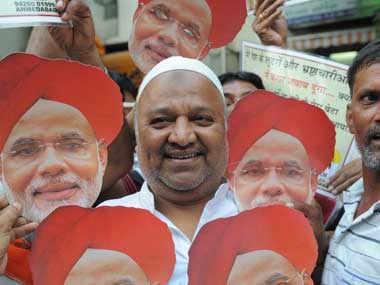It is a chilling analysis of the political rise of Narendra Modi after the Gujarat riots of 2002. “Evidence alone won’t break the Modi narrative,” says social scientist Shiv Visvanathan, making the argument that evidence against Modi, no matter how brilliantly compiled and reported, has so far failed to “break the Modi story”. Modi, says, Vishvanathan, is the better story teller and will, therefore, prevail over empirical documents. He was speaking at a panel discussion on ‘The Dirty Business of Clean Chits’ at the launch of senior journalist Manoj Mitta’s book, The Fiction of Fact-Finding: Modi and Godhra. “Gujarat is not normal. It has been normalised by a set of narratives which the Vardarajans and the Mittas cannot challenge. Modi is the better story teller. Till we confront this, democracy is not going to return to normal,” said Visvanathan referring to former editor of The Hindu, Siddharth Vardarajan, who brought out a book on the Gujarat riots titled Gujarat: The Making of a Tragedy. [caption id=“attachment_1443033” align=“alignleft” width=“380”]  Has the narrative around Modi been changed? AFP[/caption] Mitta’s book Fiction of Fact-Finding is a study of the Gujarat 2002 investigations and raises some very serious and disturbing questions about the Supreme Court appointed Special Investigation Team (SIT) that gave Modi a clean chit. The SIT was headed by former CBI director R K Raghavan. Speaking about the first two days (27 and 28 February) of Gujarat 2002, Mitta questioned the SIT’s investigation of Modi’s claim that he had not been aware of the Gulbarg Society massacre for almost five hours after it had happened. The Gulbarg Society massacre, that killed 69 people including former Congress MP Ehsan Jafri, occurred on 28 February, the day after the arson in Godhra had led to 59 people being burnt alive in the S6 coach of the Sabarmati Express. “When he (Modi) was asked by the SIT in 2010, when exactly he came to know about the Gulbarg massacre, he said he did so at a meeting held in his Gandhinagar House in the night at 8.30 pm. Here is a violence that began early in the morning in the form of a siege that led to a massacre at around 3 pm and was over by at around 3.45 pm. And here was a man who was holding a series of meetings through the day closely tracking the violence as it unfolded,” Mitta said. “So this ‘decisive and impartial administrator’ did not know about the Gulburg society massacre for as long as five hours. This is a very implausible and incongruous claim for him to have made. Anybody who is probing this incident, especially if he was given the mandate by the Supreme Court to do an impartial inquiry, would have thought it fit to question him (Modi) on this incongruous claim,” he said. Countering Mitta’s questioning of the composition of the SIT and its investigation into the riots, retired IPS officer Prakash Singh, speaking at the panel discussion, described the SIT chief Raghavan as an “upright officer” against whom the department had not received any complaints. Defending the SIT, Singh said, “Mitta finds fault with the cavalier approach of the SIT. I don’t know to what extent that would be true. He also finds fault with the SIT for exploiting the loopholes in law. If there are loopholes in law, they would have to be filled up by someone else. Raghavan couldn’t have filled them up.” Raising broader questions about the BJP’s Prime Ministerial candidate’s reluctance to answer questions on 2002 and comparing him to a student who wants to get hold of the question paper before an examination, historian Dilip Simeon, said, “As far as I know, Modi doesn’t want to answer questions on TV without knowing what the questions are beforehand. This is cheating." “I am only saying this because it relates to the fact that he is afraid to stand in a witness box and answer questions. They are straightforward questions and he can give straightforward answers and be acquitted. There is a huge effort to actually keep this person from the witness box. The effort to become PM is actually to escape the witness box,” he said. Disagreeing with Visvanathan’s analysis that it was a failure of narrative that was responsible for Modi rise, Simeon put forward an even more chilling analysis of the ‘Modi wave’. “My approach to this is there is no failure of narrative. It is just that there are several narratives going on together. The same person who will say XYZ was not involved, will also say that he is Hindus’ hriday samrat. This is a story that has been going on for a very long time,” Simeon said. “The same people who will deny Savarkar had anything to do with the murder of Gandhi will at the same time say we killed Gandhi. It is a dual narrative. You are technically innocent and you are ideologically happy and celebrating. This is something we don’t recognise. The popularity of Modi is not that he is innocent but that is he guilty. That is root of the popularity,” he said
Is Modi’s success a result of him actually being involved in the 2002 riots?
Advertisement
End of Article


)

)
)
)
)
)
)
)
)



